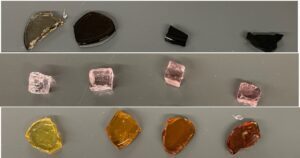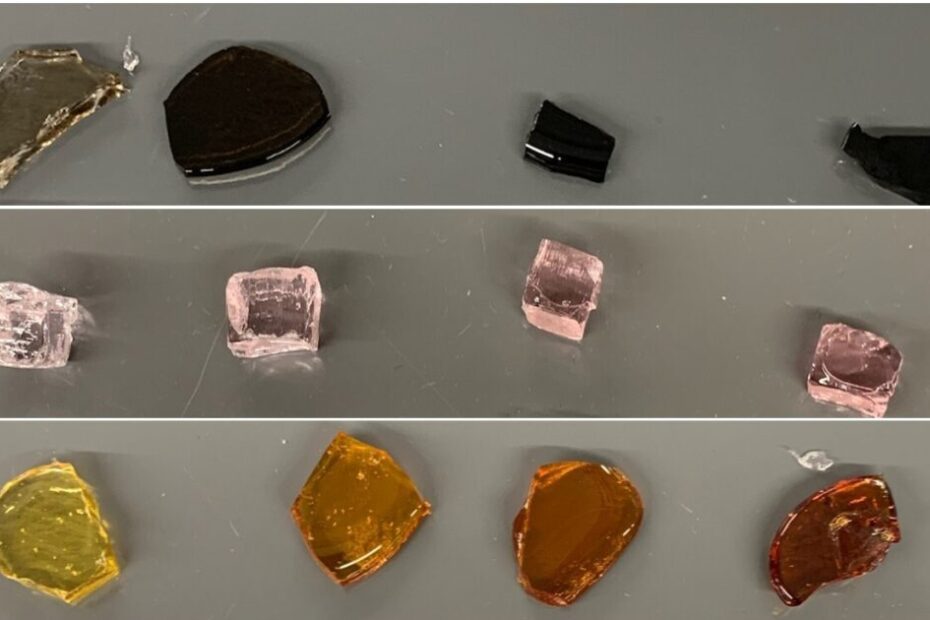Scientists Develop LionGlass 10X Stronger, Aims to Reduce Carbon Emissions by 50%

LionGlass is a newly developed glass that is said to be safer for the environment and is ten times harder to break than regular glass. When glass is manufactured, at least 86 million metric tons of carbon dioxide are discharged into the environment each and every year. The researchers at Penn State have developed a novel type of glass known as LionGlass, which has the potential to reduce this carbon emission by fifty 50%. Not only does the production of this innovative kind of glass need a lot less energy than the normal soda lime silicate glass does, but it is also more resistant to being broken. Scientists that made this discovery have just recently submitted an application for a patent, which is the first step toward releasing LionGlass.
According to John Mauro, who is both the Dorothy Pate Enright Professor of Materials Science and Engineering at Penn State and the primary researcher on the project, “Our goal is to make glass manufacturing sustainable for the long term.” The requirement for batch materials that include carbon is eliminated by the use of LionGlass, which also significantly reduces the temperature at which glass melts.
One of the most common kinds of glass, soda lime silicate glass can be found in things like windows and tableware made of glass. Quartz sand, soda ash, and limestone are melted down and melted down together to make it. Both soda ash and limestone are composed of carbonate ions, however, soda ash contains sodium carbonate whereas limestone contains calcium carbonate. Both of these substances give off carbon dioxide (CO2) when they are heated, which is a gas that may store heat.
Mauro provided an explanation by saying that “during the melting process, the carbonates break down into oxides and release carbon dioxide into the air.”
However, the majority of CO2 is produced by the energy that is consumed to get kilns up to the extremely high temperatures that are necessary for melting glass. According to Mauro, the freezing temperatures of LionGlass are around 300 to 400 degrees Celsius lower than those of ordinary soda lime glass. This results in LionGlass consuming approximately 30% less energy than traditional soda lime glass.
Not only is LionGlass better for the environment, but it is also far more durable than conventional glass. Researchers were taken aback when they discovered that the new glass, which has been given the name “Nittany Lion Glass” in honor of Penn State University’s mascot, is significantly more resistant to breaking than conventional glass.
Some of the group’s glass combinations were so resistant to breaking that they remained intact even after being struck by a Vickers diamond indenter with a force equal to one kilogram. LionGlass is at least ten times less likely to break than traditional soda lime glass, which breaks when a load of around 0.1 kilograms is placed on it. LionGlass is at least ten times more likely to break than conventional soda lime glass. According to the specialists, LionGlass has not yet been tested to its limits because the indentation equipment has already reached its maximum capacity.
A postdoctoral fellow working in Mauro’s lab named Nick Clark stated that “we kept adding weight to LionGlass until we reached the maximum load that the equipment can handle.” “There was no way that it could crack.”
According to Mauro, one of the most crucial things to examine in glass is its ability to resist cracking because cracking is ultimately how the material deteriorates. Glass’s surface develops microscopic fissures over time, which eventually become points of weakness. When a piece of glass breaks, it does so because it already has numerous tiny cracks throughout its surface, which render it fragile. Additionally, he emphasized the significance of using glass that is resistant to the formation of microcracks.
According to Mauro, one of the most crucial features that glass possesses is its ability to withstand damage. “Consider all of the ways in which we rely on the durability of glass, such as in the automotive sector, the electronics industry, architecture, and communication technology such as fiber optic lines. Even in the medical industry, vaccinations are kept in sturdy glass containers that are impervious to the effects of chemical exposure.
Mauro has high hopes that now that LionGlass is more durable, it may be possible to employ it in the production of lighter goods. Because LionGlass is ten times stronger than conventional glass, it is possible to make items out of it that are considerably more compact.

Mauro speculated that “we should be able to make it thinner and still get the same level of damage resistance.”Because it requires less energy and raw resources to produce, a lighter product is even better for the environment than one that is heavier. It takes even less energy to transport the glass further down the production line, so it’s a win-win situation for everyone involved.
According to Mauro, the research team is still trying to figure out what LionGlass is capable of. They have requested that their copyright be protected for the entire glass genus. This suggests that there are a great deal of distinct varieties of LionGlass, each of which has its own characteristics and applications. In order to investigate the properties of various LionGlass varieties, they are currently subjecting them to a variety of chemical conditions. Based on the findings, the team will get additional knowledge regarding the ways in which LionGlass can be utilized all over the world.
“People learned how to make glass more than 5,000 years ago, and ever since then, it has been a key part in making modern civilization what it is today,” said Mauro. “Glass has been an essential part of the development of modern civilization.” As we face global concerns such as environmental difficulties, renewable energy, energy efficiency, health care, and urban growth, this is a time when we need it to help create the future. Glass has the potential to be a significant contributor to the solutions to these issues, and we are prepared to assist.
